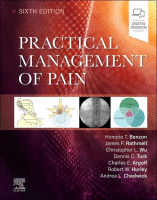Physical Address
304 North Cardinal St.
Dorchester Center, MA 02124

The use of electric current for pain management has a long history. As early as the second half of the 19th century, brain lesions were made in animals with the application of direct current, and empirical rules for quantifying lesion…

The International Association for the Study of Pain (IASP) continues to deliberate the classification of chronic pain as a disease symptom or etiology. Semantics aside, pain is undoubtedly a public health crisis as the Institute of Medicine’s report estimates that…

Head and neck blocks consist of blockade of the atlanto-axial joint, third occipital nerve, occipital nerve, sphenopalatine ganglion, trigeminal nerve, and glossopharyngeal nerve. This chapter will discuss the rationale for these blocks, the relevant anatomy, and the technique in performing…

Neurolytic therapy, for the appropriate patient, may result in significant improvement of quality of life and possibly improved function. Few other interventional pain therapies have such extreme risk/benefit profiles requiring targeted patient selection and meticulous procedural technique. Evaluating neurolysis as…

The 2011 report from the United States Institute of Medicine concluded that pain care should be tailored to each person’s experience and that self-management should be promoted as a central strategy to improve care. The importance of self-management was again…

Integrative Medicine: Overview Integrative Medicine is a philosophy of care that integrates conventional allopathic medical therapies with modalities not typically included in conventional care and addresses the physical, emotional, and spiritual needs of the patient. This field of medicine is…

Key Points Interdisciplinary care of patients with chronic pain has proven to be of significant value. A collaborative relationship between patients and rehabilitation professionals is essential to enhance successful outcomes. The pain management treatment plan must be tailored to the…

~ A rehabilitation approach utilizes a combination of person-centered, non-pharmacologic, and pharmacologic strategies for pain management. A number of different healthcare practitioners participate and can provide rehabilitation to the patient, including physicians who specialize in physical medicine and rehabilitation, pain…

Psychological interventions for managing individuals experiencing chronic pain include a wide range of approaches and therapeutic targets. They are based on several theoretical perspectives. This chapter will first provide an overview of the basic principles and backgrounds on which psychological…

In contrast to the use of a systemic analgesic, the use of a topical analgesic may result in pain relief without the requirement for notable systemic absorption. In certain situations, and with specific agents (i.e. nitroglycerine, fentanyl, clonidine), transdermal application…